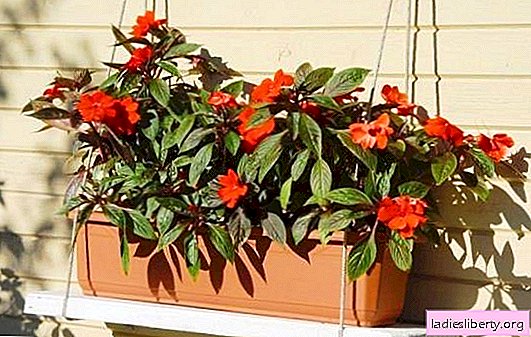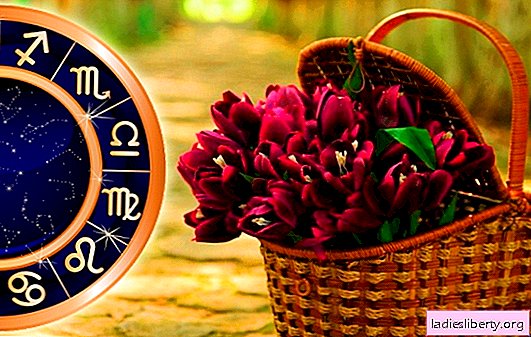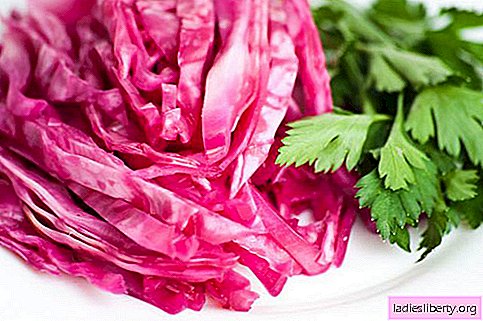
There are a lot of varieties of balsam, some are intended only for open ground.
But we will talk about a houseplant, in common people they call it "Roly wet." This is due to its feature of isolating dew, which appears on the leaves after watering.
At home, caring for balsam is simple, the flower belongs to unpretentious plants.
However, beginning gardeners have some difficulties with its cultivation.

Features of growing indoor balsam
Despite the large number of varieties of this plant, all varieties have similar growing characteristics.
1. "Roly wet" loves moisture. Waterlogging is not as scary for him as drought. Rare watering is detrimental to the plant. But still, do not arrange a swamp in a flower pot.
2. Balsamine does not tolerate heavy soil and stagnation of moisture at the roots. The presence of drainage holes reduces the risk of root rot.
3. Grow a flower in a cramped pot, otherwise it will put forth all its strength not rooting. Flowering will have to wait a long time.
4. Indoor balsam is well propagated by cuttings. Rooting is quick.
5. The plant is often affected by pests and diseases, requires careful examination. Diseases develop rapidly, and the flower may die.
How to care for balsam at home
In order for Vanka Wet to develop well, he needs to create suitable conditions. The flower loves the sun, but dries quickly on the southern windows. The best place for a balsamic flowerpot will be the eastern and western rooms. With good lighting, the plant can be placed inside the room.
Watering mode
The first and most important thing was melting in the care of balsam at home - there should be enough water, but everything is good in moderation. On hot summer days, you need daily watering of the plant, otherwise it will inevitably lose leaves and buds. In winter, the frequency of watering is reduced, switching the flower to another mode. Balsam is watered twice a week.
According to the advice of experienced gardeners, it is useful to water the plant in a pan. To do this, choose pots with deep pallets. With this watering, the roots absorb exactly as much water as they need. But do not rush to pour the excess, a thirsty flower absorbs them at night.
If the balsam is dry, then you can try to save it. To this end, the plant is abundantly watered by immersing the pot in water until the soil is completely wet. After a few hours, the balsam should come to life, but the plant will still be too weak. After a day, excess water is drained from the pan.
Choosing the soil for balsam
The flower prefers light nutrient soil. As a rule, they use universal soil for flowering indoor plants. Heavy soils fed with nitrogen fertilizers are not suitable for growing balsam. In such a substrate, the flower gives an abundance of leaf mass to the detriment of flowering.
The flowerpot is filled halfway, which provokes a fast flowering plant. A large, fully filled pot, pushes balsam to grow roots.
Lush and prolonged flowering of balsam can be obtained using top dressing. As a fertilizer, complexes for flowering indoor plants are used. They bring nutrient mixtures according to certain rules:
1. Only fully healthy plants are fed.
2. After transplantation and during rest, balsamins do not fertilize.
3. An excess of nutrients is dangerous for the plant and leads to its death.
4. Preparations and solutions are applied carefully, preventing them from falling onto the leaves.
5. The frequency of top dressing during the period of growth and development - 1 time in 7 days.
How often is balsam transplanted?
Caring for balsam at home, every gardener is faced with the need to transplant a plant. How to do it and when?
Balsamins need an annual transplant. As a rule, it is carried out in the spring with the beginning of active plant growth. After transplanting, "Vanka wet" gives young shoots that bloom well. Annual transplantation makes it possible to rejuvenate the plant.
Experienced growers are advised to carry out two transplants per season. Since, with the onset of autumn, the balsam shoots lose their decorative effect, are extended, bald spots appear.
It is also important to transplant the plant immediately after purchase. Balsam should not live in a shipping pot and will quickly fade.
Balsam propagation + photo
Balsamines are quite unpretentious, from them you can create your own collection of indoor plants. It is not necessary to buy ready-made bushes, it is enough to take possession of the process of a favorite variety. Balsam is well propagated by cuttings. They are taken from a healthy plant.
Cuttings are cut with a sharp tool, making an oblique cut. Each stalk should have several internodes. Planting material is well rooted in water. When the roots appear, the cuttings are planted in the ground for growing.

Seasoned flower growers propagate balsam by planting cuttings directly in the ground. For this, the prepared planting material is treated with a preparation to accelerate root growth and placed in a pot, creating greenhouse conditions for it. Rooting goes well. Further care for balsam at home does not differ from the usual.

Difficulties in growing indoor balsam
1. Spider mite. In violation of the growing conditions, balsam is damaged by a pest, the appearance of which is due to excessive dryness of the air. In the fight against ticks, spraying and other ways to moisten the air will help.
2. Scyarides. Small midges in the earth appear as a result of waterlogging of the soil. Transplanting the plant into new soil will help get rid of them. After transplanting, the irrigation regime should be adjusted.
3. Bacteriosis. Signs of the disease are black spots on the leaves. Bacteriosis is treated by spraying. They use drugs for fungal diseases.
4. Balsam leaves twist and fall off - lack of light, heat, too close a pot. Eliminate the disadvantages of balsam care, transplant.
Varieties of indoor balsam with photo
Waller balsamin and New Guinean are often grown at room conditions.
Waller's balsamic varieties are combined into a separate group, which has more than 15 varieties. These are perennial plants obtained by crossing some varieties. A feature of these plants is their color, flower shape, flowering time. Terry varieties of these balsams with a compact crown are found. The most popular of all varieties remain:
• Fiesta and Symphony series;
• Candy series, Super Elfin;
• Duet series.

New Guinean balsam is highly resistant to heat. It grows well and develops on the southern windows, does not need shading. There are plants with white, pink and red flowers. The most popular among flower growers are the series:
• Harmony;
• Java;
• Macarela;
• Mini.

Indoor balsam is very responsive, all the efforts will not go in vain. The flower will thank with bright and memorable flowering, which will last more than one year.











